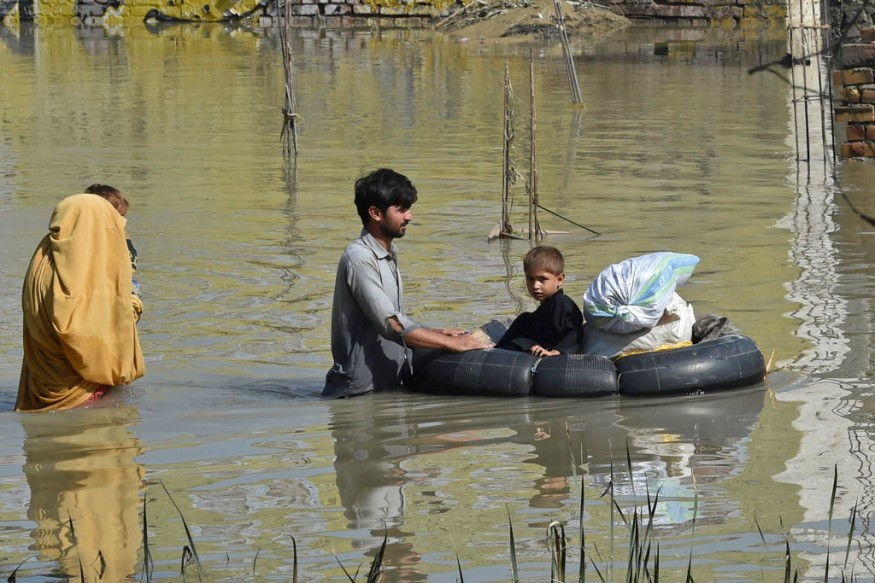With over 1,000 dead, Pakistan proclaims the floods a "climate calamity." The "monster monsoon" causes flash flooding, destroying towns and crops while displacing thousands of people.

Monster Monsoon
A Pakistani minister described the fatal monsoon season as "a catastrophic climate calamity" and "a climatic dystopia at our doorstep" as authorities reported that since mid-June, more than 1,000 people had died in extensive floods in Pakistan.
In all four provinces, flash floods that have been getting worse lately have destroyed communities, highways, bridges, people, animals, and crops. As military and rescuers transported trapped individuals to relief camps and offered food to thousands of displaced people, Pakistan made a plea for international assistance.
Death Toll
The nation's disaster management agency reported on Sunday that 1,033 people have died due to the monsoon rains, with 119 deaths occurring the previous day. It claimed that this year's floods were equal to the worst floods recorded in 2010, which claimed more than 2,000 lives and submerged roughly a quarter of the nation.
Shehbaz Sharif, the prime minister of Pakistan, visited the severely damaged Balochistan province and begged for assistance.
Pakistan is going through a "severe climatic crisis, one of the harshest in the decade," according to senator and minister of climate change Sherry Rehman.
Extreme Weather
The monster monsoon of the decade is currently wreaking nonstop havoc across the country, she said in a video shared on Twitter. "We are at the ground zero of the frontline of extreme weather events, in an unrelenting cascade of heatwaves, forest fires, flash floods, multiple glacial lake outbursts, flood events, and now the monster monsoon of the decade is wreaking nonstop havoc throughout the country," she said.
One in seven Pakistanis has been affected by the unusual monsoon that began in June and has affected more than 33 million people. Numerous roads have been left impassable, about 300,000 dwellings have been demolished, and major power shortages have occurred. The local media recorded at least 83,000 cattle deaths on the previous day.
During his visit to the severely stricken Balochistan district of Jaffarabad, Sharif was informed that at least 75% of the province-the least developed in Pakistan and occupies half of its territory-was impacted by the water.
According to Rehman, following the terrible heatwaves in March and April, this year has been distinguished by one harsh season after another. As the flood continues, the population impacted by it may increase from the current 33 million people.
One-fifth of Pakistan was underwater during the 2010 flood. It gets worse," she declared.
Overwhelming Crisis
Bilawal Bhutto Zardari, Pakistan's foreign minister, stated that Pakistan required "overwhelming" financial assistance to deal with the floods and expressed optimism that financial organizations like the International Monetary Fund (IMF) would consider the economic consequences.
With soaring inflation, a declining currency, and a current account deficit, the south Asian country was already experiencing an economic catastrophe.
Khyber Pakhtunkhwa's Kohistan region was shut off from the rest. According to its assistant commissioner, Saqib Khan, there is no road route, and the communication system and electricity in the impacted districts have broken down. The organization had asked military helicopters to rescue stranded residents.
Severe Impact
As a new downpour from the overflowing rivers in the north pushed its way south, officials warned that torrents of water were anticipated to hit Sindh province in the coming days, adding to the agony of millions already impacted by the floods.
Related Article : Exposure to Major Disasters Can Cause Long-Term Mental Health Problems
For more climate and weather updates, don't forget to follow Nature World News
© 2025 NatureWorldNews.com All rights reserved. Do not reproduce without permission.





